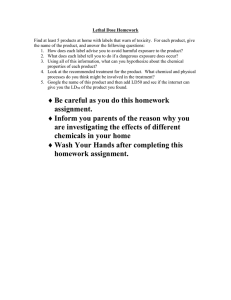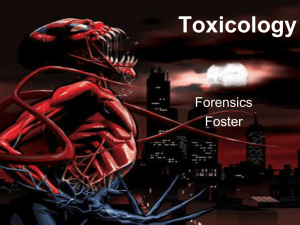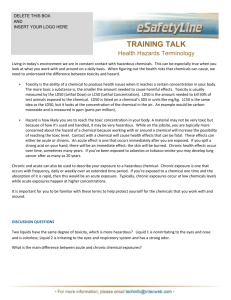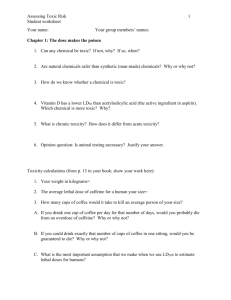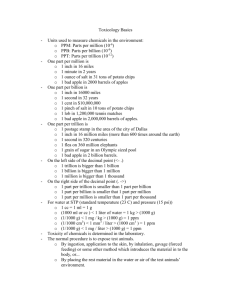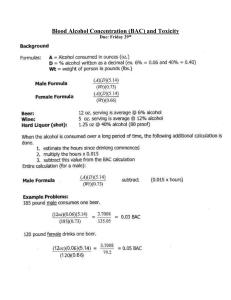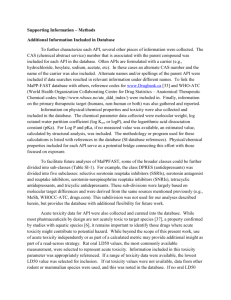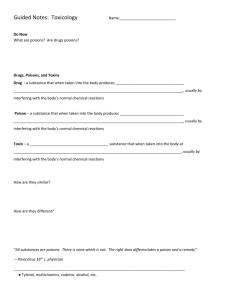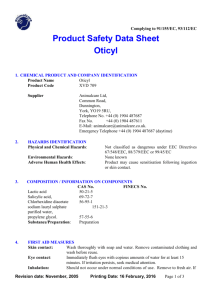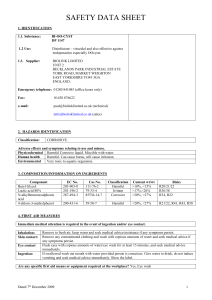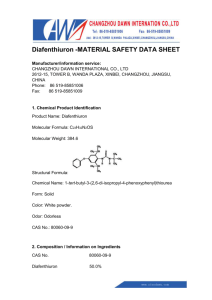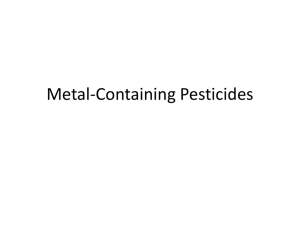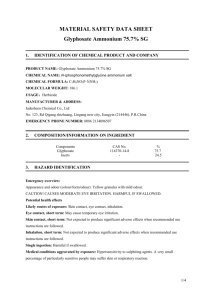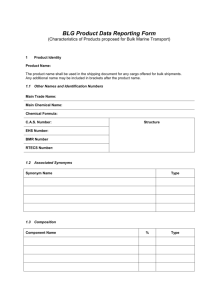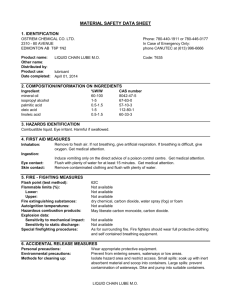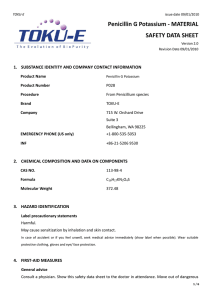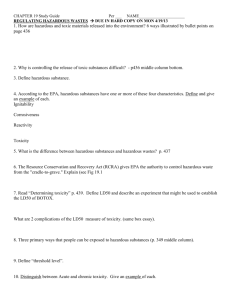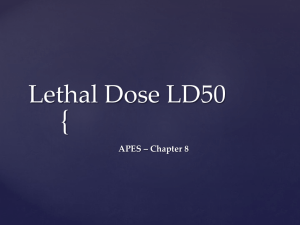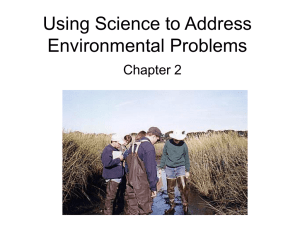ACID RAIN: “PROBLEMS OF CONSERVATION”
advertisement
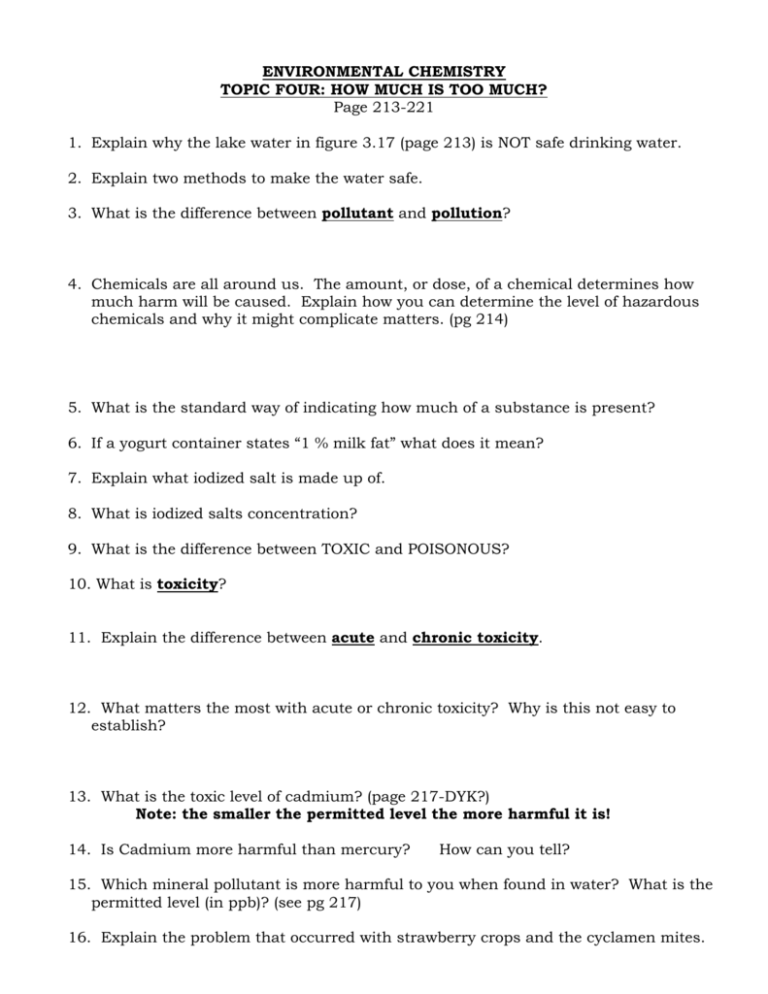
ENVIRONMENTAL CHEMISTRY TOPIC FOUR: HOW MUCH IS TOO MUCH? Page 213-221 1. Explain why the lake water in figure 3.17 (page 213) is NOT safe drinking water. 2. Explain two methods to make the water safe. 3. What is the difference between pollutant and pollution? 4. Chemicals are all around us. The amount, or dose, of a chemical determines how much harm will be caused. Explain how you can determine the level of hazardous chemicals and why it might complicate matters. (pg 214) 5. What is the standard way of indicating how much of a substance is present? 6. If a yogurt container states “1 % milk fat” what does it mean? 7. Explain what iodized salt is made up of. 8. What is iodized salts concentration? 9. What is the difference between TOXIC and POISONOUS? 10. What is toxicity? 11. Explain the difference between acute and chronic toxicity. 12. What matters the most with acute or chronic toxicity? Why is this not easy to establish? 13. What is the toxic level of cadmium? (page 217-DYK?) Note: the smaller the permitted level the more harmful it is! 14. Is Cadmium more harmful than mercury? How can you tell? 15. Which mineral pollutant is more harmful to you when found in water? What is the permitted level (in ppb)? (see pg 217) 16. Explain the problem that occurred with strawberry crops and the cyclamen mites. 17. What is meant by LD50? 18. Is a high or low LD50 more lethal? Why? 19. Why is an LD50 a more accurate way of reporting the effects of a chemical than just the toxic dose that an individual has taken in? 20. What is the most lethal poison in humans (from table 3.4)? a. Where does it come from? b. How can humans avoid it? 21. How does the human-made dioxin compare to botulinum toxin A? 22. What do you think “acceptable risk” means? 23. List three reasons why determining an acceptable risk for new drugs takes so long. 24. What is another reason to question the reliability of toxicity values? 25. Explain the thalidomide issue in your own words. 26. Are most poisons natural or human-made? 27. What is the LD50 of caffeine in mice? Can we use it to determine the affects on humans? Explain. 28. Explain what is meant by “benefits versus drawbacks” (page 220)
